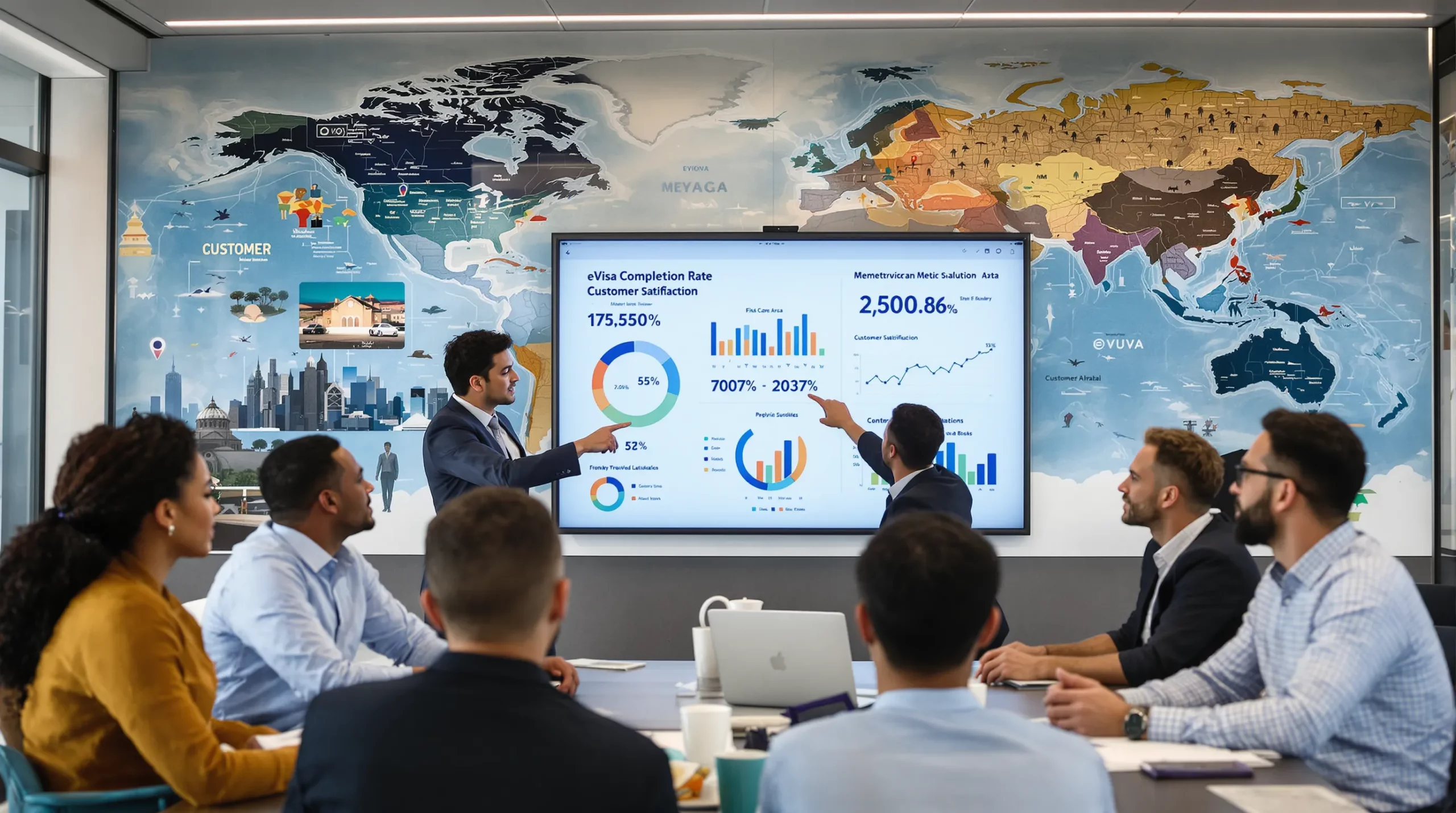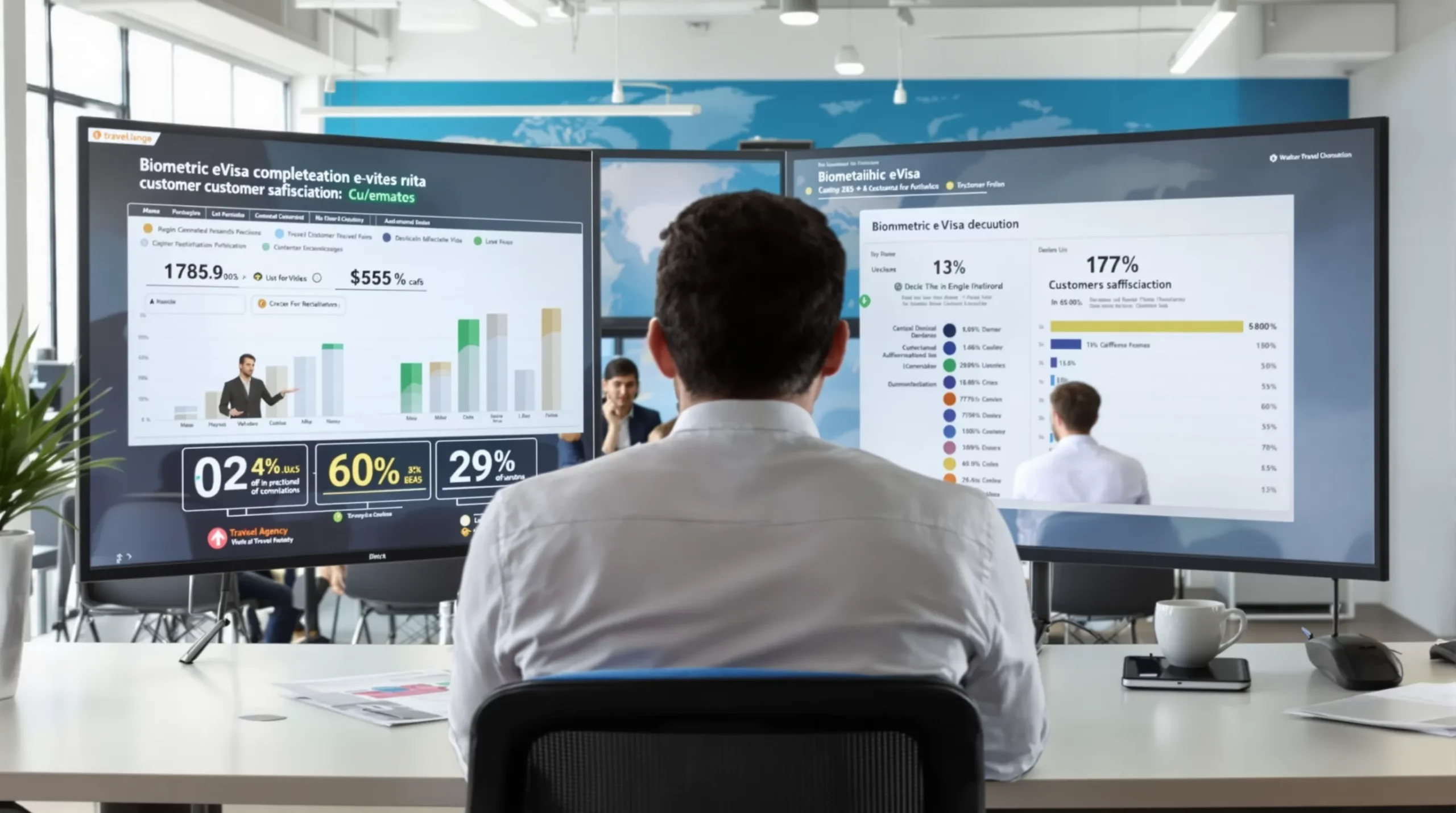The Rise of Biometrics in eVisa Approvals: What It Means for Travel Firms

Why biometrics is suddenly front-page news in eVisa programs
When the European Union confirmed in April 2025 that fingerprints and facial images will be mandatory for every ETIAS authorization from next year, it underlined a global trend that has been gathering pace for almost a decade. More than 70 countries now rely on some form of biometric matching to approve or deny electronic visas, and the International Civil Aviation Organization (ICAO) predicts that figure will reach 100 by 2027.
For travel firms—online travel agencies, airlines, tour operators, even cruises—this shift is more than a technical footnote. It has direct implications for booking flows, data security obligations, ancillary revenue opportunities and, ultimately, customer satisfaction. In this article we explain why biometrics has become the gold standard for eVisa approvals, how the technology works, and what forward-thinking travel businesses should do today to stay ahead.
1. From paper stamps to face scans: the fast evolution of border identity
| Milestone | Year | What changed for travelers |
|---|---|---|
| First machine-readable passports | 1980 | OCR strips enabled faster border checks but no biometrics. |
| ICAO Doc 9303 introduces e-Passport chip | 2004 | Digital photo stored on chip; border gates could verify facial image. |
| Estonia launches world’s first fully digital eVisa | 2011 | Application, payment and approval handled online; 2D-barcode visa issued. |
| India adds compulsory fingerprints to eVisa | 2015 | Biometric enrollment on arrival; reduced fraud by estimated 40 %. |
| EU approves Entry/Exit System (EES) & ETIAS | 2023 | Ten fingerprints + face image captured at first entry, reused for future trips. |
| ICAO endorses Digital Travel Credential (DTC) | 2024 | Opens door to mobile-based identity and remote biometric checks. |
Sources: ICAO, EU Commission, India MEA.
The pressing reason behind these roll-outs is simple: conventional identity documents can be forged, stolen or borrowed. Biometric identifiers—face, fingerprints, iris—are far harder to spoof at scale. Automated matching also slashes manual workload at consulates, allowing governments to process record volumes of applications without compromising security.
Biometrics 101
- Facial recognition: The most widely used modality. An applicant’s selfie is compared to the passport photo using liveness detection algorithms to prevent replay attacks.
- Fingerprints: Still viewed as the most reliable unique identifier after DNA. Typically captured via smartphone touch sensors or enrollment kiosks at the airport.
- Iris and voice: Deployed in high-security corridors (e.g., UAE Smart Gates) but not yet mainstream in eVisa programs.
2. Why governments love biometric eVisas
- Fraud reduction – India’s Ministry of Home Affairs reported a 60 % drop in identity fraud cases on its eVisa platform after adding fingerprints.
- Risk profiling – Matching live biometrics against international watchlists (Interpol SLTD, EU-VIS, etc.) surfaces threats in seconds.
- Seamless borders – Once biometrics are captured, future trips can be cleared by eGates, aligning with IATA’s One ID initiative.
- Cost savings – Fewer in-person visa interviews and smaller airport staffing requirements.
For travelers, the upside is faster approvals and shorter queues. A study by SITA (2024 Global Passenger IT Insights) showed that biometric eVisa holders spent 46 % less time in arrivals halls than passengers using traditional visas.
3. The ripple effect on travel firms
a) Booking flow redesign
When a destination requires live facial capture during the visa application, a simple three-field form no longer suffices. Your checkout must:
- Prompt customers to take a compliant selfie (correct lighting, neutral expression)
- Validate liveness and quality in real time
- Handle document uploads securely
Providers like SimpleVisa tackle these steps behind the scenes via API or white-label widgets, ensuring the extra friction does not derail conversions.
b) New data-handling obligations
Biometric templates are classified as special category data under GDPR and comparable privacy laws worldwide. That means:
- Explicit informed consent is mandatory.
- Storage must be encrypted at rest and in transit.
- Retention policies have to match government rules (often max 5 years, sometimes 24 hours after entry).
Travel firms that choose to capture biometrics directly become data controllers and inherit these legal burdens. Offloading collection to a compliant visa management platform can shift part of the liability.
c) Ancillary revenue expansion
Every new mandatory step is also a revenue touchpoint. When Canada introduced facial recognition for eTAs, several airlines embedded a premium “biometric verification fast-track” in their mobile apps, charging CA $9–15 per traveler. Conversion rates were strong because passengers feared airport delays.
Integrating a turnkey solution such as the SimpleVisa Premium eVisa workflow lets OTAs:
- Upsell real-time photo vetting or manual QA review
- Bundle visa + insurance + carbon offset in one click
- Collect partner commission without investing in R&D
For concrete numbers, see our guide on How eVisa APIs work (internal link: step-by-step API overview).
d) Customer experience stakes
Travelers typically discover biometric requirements late—sometimes when they reach the check-in counter. If your brand can flag the rule at booking and provide an immediate solution, you win trust. If you ignore it and the customer is denied boarding, you pick up the complaint cost.
4. Implementation paths: build, partner or hybrid
| Option | Pros | Cons | Typical go-live |
|---|---|---|---|
| In-house build | Full UX control; proprietary data. | High compliance risk; 12–18 month dev cycle; ongoing maintenance. | Late 2026+ |
| Pure partnership (e.g., SimpleVisa white-label) | No-code deployment; instant compliance; shared liability. | Limited UI flexibility; recurring integration fee. | 30–60 days |
| Hybrid (API + custom UI) | Brand consistency; some liability transfer; unique upsell combos. | Requires dedicated engineering & infosec. | 3–6 months |
In 2025, most mid-size OTAs opt for the hybrid model: they design front-end screens but call a specialized API for selfie capture, liveness checks and government submission.
5. Key questions to ask your biometric visa vendor
- Certification – Are algorithms independently tested for bias across age, gender and skin tone? NIST FRVT scores above 99 % are industry benchmark.
- Data residency – Where are biometric templates stored, and are they geo-fenced? Essential for destinations like the EU with strict adequacy rules.
- Audit logs – Can you retrieve a full trail to prove consent and deletion to regulators?
- Fallback paths – What happens if a traveler’s phone camera fails liveness? Look for assisted-service or kiosk hand-off options.
- Roadmap alignment – Does the vendor support upcoming standards such as ICAO Digital Travel Credential level 2?
6. Case snapshot: ETIAS and the tour operator dilemma
A European coach operator selling multi-country itineraries faced a potential 12 % drop in bookings after customers discovered they would need to enroll biometrics at the first Schengen entry in 2026. By integrating SimpleVisa’s API inside its booking engine and app, the operator now:
- Shows a dynamic ETIAS requirement banner based on passport detection.
- Guides passengers through facial capture during checkout.
- Schedules fingerprint enrollment on arrival only if required, reducing perceived hassle.
Early results: abandonment rate on high-value tours fell from 18 % to 6 %, and average ancillary revenue per passenger rose by €11.80.
Learn more about ETIAS nuances in our deep dive on the ETIAS application process.
7. Security first: lessons from recent breaches
Biometric data leaks are rare but catastrophic. In 2024, a third-party service powering several visa portals in Southeast Asia exposed 1.3 million facial templates due to misconfigured S3 buckets. The cost:
- Government contract suspended within 48 hours.
- OTAs involved faced class-action suits in Singapore and Australia.
- Estimated remediation and legal fees exceeded US $22 million.
Mitigation tips from SimpleVisa’s security team (full details in our post on the security of the eVisa system):
- Use end-to-end TLS 1.3 only.
- Store templates separately from PII, with irreversible hashing.
- Rotate encryption keys at least every 90 days.
- Perform quarterly penetration tests and share executive summaries with partners.
8. Preparing your organization for the biometric wave
- Train support teams to handle new edge cases: users with disabilities, identical twins, head-gear religious exemptions.
- Update privacy policies well ahead of integration; regulators expect transparency backed by DPIAs (Data Protection Impact Assessments).
- Map customer journeys to identify spots where a selfie request feels natural—often right after ticket payment when motivation is high.
- Set KPIs: completion rate, average processing time, upsell take-rate, and NPS variance for biometric versus non-biometric routes.

9. How SimpleVisa can help
SimpleVisa has processed over 4 million biometric-enabled eVisa applications via:
- Visa processing automation that folds facial capture and liveness detection into a single API call.
- White-label mobile flows that adapt to airline or OTA branding without code.
- Custom data services providing real-time rules on which nationalities need which biometrics at which airports.
Because we already power more than 400 travel websites, we maintain a constantly updated compliance matrix covering 60+ destinations. Travel firms gain faster launches, reduced legal exposure and new ancillary income streams.
Ready to see it live? Book a 15-minute demo at www.simplevisa.com.
10. Bottom line
Biometrics is rapidly becoming a non-negotiable element of eVisa approvals. While the technology promises safer borders and smoother passenger journeys, it also introduces complexity that many travel businesses are not yet equipped to manage alone. By partnering with a specialized visa management platform and preparing teams, policies and user flows now, travel firms can turn what might feel like regulatory headwind into a competitive advantage—boosting revenue and loyalty in the process.
